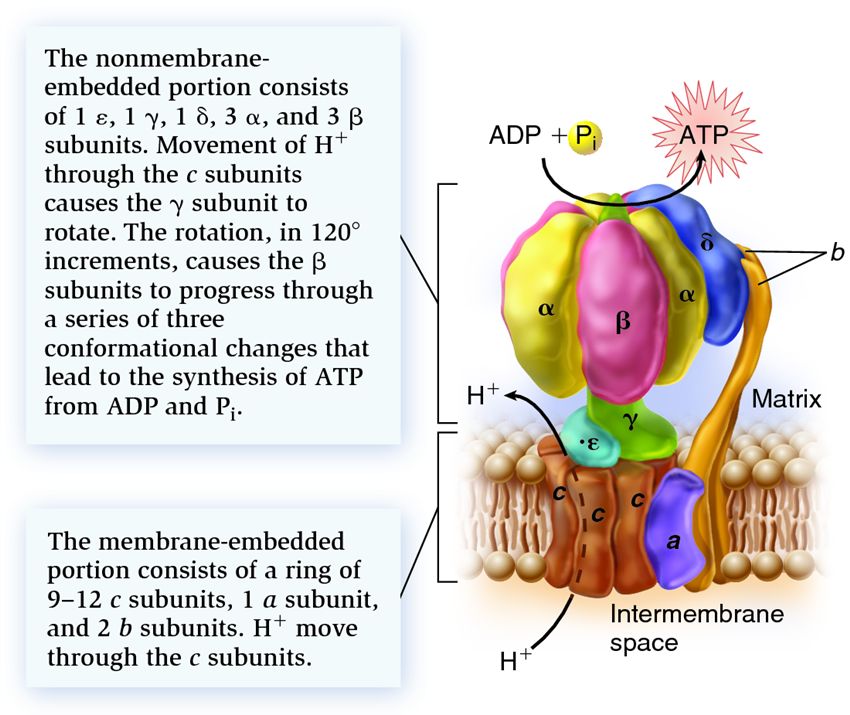 |
| Previous Image | Next Image |
| Description: When hydrogen ions pass through a c subunit, a conformational change causes the ? subunit to turn clockwise (when viewed from the intermembrane space). Each time the ? subunit turns 120 degrees it changes its contacts with the three ? subunits, which in turn causes the ? subunits to change their conformations. How do these conformational changes promote ATP synthesis? The answer is that the conformational changes occur in a way that favours ATP synthesis and release. The conformational changes in the ? subunits happen in the following order: Conformation 1: ADP and P i bind with good affinity. Conformation 2: ADP and P i bind so tightly that ATP is made. Conformation 3: ATP (and ADP and P i) bind very weakly, and ATP is released. Each time the ? subunit turns 120 degrees, it causes a ? subunit to change to the next conformation. After conformation 3, a 120-degree turn by the ? subunit returns a ? subunit back to conformation 1, and the cycle of ATP synthesis can begin again. Because the ATP synthase has three ? subunits, each subunit is in a different conformation at any given time. Paul Boyer proposed the concept of a rotary machine in the late 1970s. In his model, the three ? subunits alternate among three conformations, as described previously. Boyer's original idea was met with great skepticism, because the concept that part of an enzyme could spin was very novel, to say the least. John Walker and his colleagues were able to determine the three-dimensional structure of the nonmembrane-embedded portion of the ATP synthase. The structure revealed that each of the three ? subunits had a different conformation: one with ADP bound, one with ATP bound, and one without any nucleotide bound. This result supported Boyer's model. In 1997, Boyer and Walker shared the Nobel Prize for their work on the ATP synthase. As described in the Feature Investigation, researchers subsequently visualized the rotation of the ? subunit. Picture Stats: Views: 1491 Filesize: 99.85kB Height: 715 Width: 850 Source: https://biology-forums.com/index.php?action=gallery;sa=view;id=337 Keywords: The subunit structure and function of the ATP synthase |
